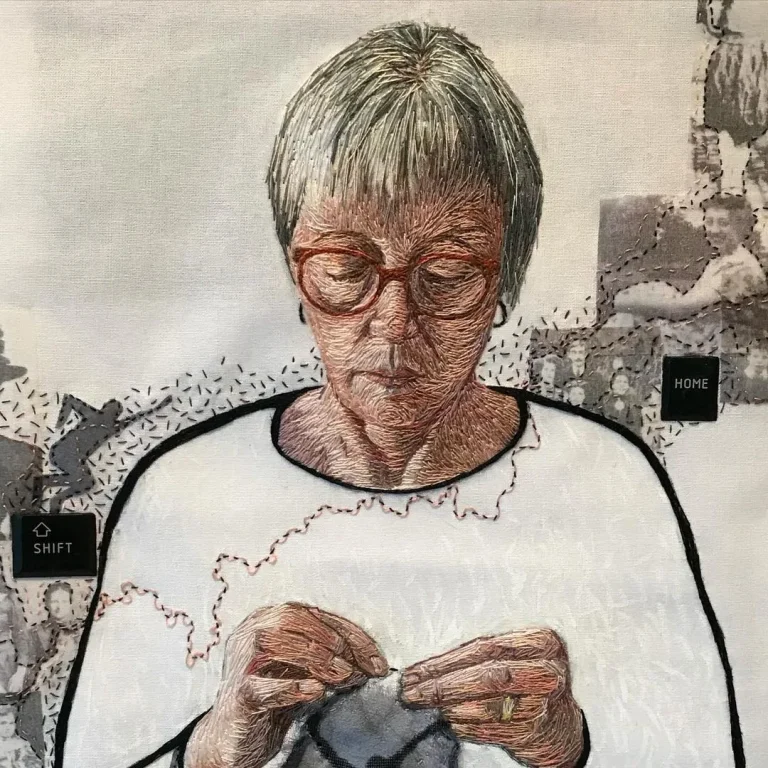As Head of Centre, I’m often asked about exactly what goes into developing, creating and running a City & Guilds accredited distance learning course, so I thought I’d like to share details of the process with you.
In fact, much, much more goes into producing a home study course than an attended course. When the physical tutor and classroom are removed from the learning situation, in order for learning to still take place other factors have to take over. That’s a big gap to fill! In the case of SST, we fill it with quality learning materials developed initially by an experienced tutor and then, once the learning outcomes have been settled upon, a whole team with different areas of expertise makes the course happen in a process which takes up to a year to complete. Not only the course materials have to be considered, but also how we ensure students have the best quality tutors and support systems possible. Filming video clips, writing instructional materials and wrapping them up in an attractive graphic design format that makes students want to learn, as well as offering unlimited support systems, takes time, expertise and money.
As distance learning providers accredited by City & Guilds, we have to pay a yearly centre fee to City & Guilds of several thousand pounds, as well as a substantial per course cost for each new course that we have accredited. As far as the actual delivery of the courses is concerned, each course has to be drafted, discussed, written, samples created, samples photographed, video tutorials filmed and edited and then the whole has to be produced to a professional level which adheres to City & Guild’s stringent quality standards. It then has to be presented to an External Verifier for consideration and any amendments required carried out.
Each student module undergoes 3 stages of proof reading prior to being issued to a student. In addition, student handbooks have to be created alongside student feedback forms, internal and external verification systems evolved and monitored. The process to develop a new course takes around 12 months and has to be undertaken prior to a single student enrolling and without the guarantee of any doing so. Even once a course is underway it has to be regularly maintained and updated. Student record software has to be licensed, modified for use and supported by internal and external technicians especially for SST students so that every student record is kept secure and up to date.
Tutors have to be recruited, trained and paid for student guidance and feedback undertaken. Continued professional development also has to be undertaken on a regular basis, as well as standardization materials and meetings which all staff members are required to attend. Student groups for each new cohort have to be created and populated to ensure peer to peer contact is enabled. Live tutor events are undertaken on a regular basis, requiring an experienced member of staff to front them as well as a member of the office admin team to moderate them to ensure student questions answered in a timely manner. In addition to all this, the paperwork requirements from City & Guilds are onerous in the extreme, requiring high staffing levels to maintain. On top of the above, of course, come the normal office expenses such as hardware, printing, postage, insurance, administrative salaries, overheads etc.
Ok – I’m sure by now that you understand firstly that developing and running quality accredited distance learning is a complicated process and secondly that its one I’m pretty passionate about! For goodness sake, I have a Doctorate in Education and specialize in the theory of retaining students on distance learning courses, so you’d expect me to be! Whilst I realise that most of what we do isn’t immediately obvious to someone who is only at the very beginning of considering undertaking one of our courses, I do know that our current and graduated students appreciate that a lot of time, consideration and expertise goes into ensuring they get the best tutors, learning materials and support out there.
We enrol around 100 students each year from our Expression of Interest list (which is around 4,000 at the time of writing) to ensure that everyone gets the best attention possible, however such a small intake means that there are a limited number of student fees over which the costs of production, support and quality maintenance can be spread. Trust me when I say you really don’t want to get stuck on an underfunded course which, although it may have slightly lower fees, also has lower standards of support and quality assurance – that is one of the fastest ways possible to ensure students feel isolated, confused about what is required from them and subsequently become demoralised and don’t manage to complete their course, thus wasting every penny they spent in the first place. It is the very definition of a false economy and adds weight to the old saying that ultimately you get what you pay for.
I would be the first to acknowledge there is a place for a local night school courses that get learners started and create a place to meet others and socialize. It’s how most of us start our enjoyment of crafts. At the other end of the scale, there is also a place for checking a technique out on a YouTube video, provided you understand that the content is very variable and you know enough to sort the good from the bad or simply misleading. However neither of these are a substitute for a professional, quality assured, certificated, City & Guilds accredited course which is appropriately compiled, structured and supported with a recognized certificate at the end to acknowledge the standard reached by the graduate. I guess it ultimately comes down to the kind of learning someone wants to undertake, the level of professionalism they require and how much they are able to afford*.
Dr Gail Cowley
*It is worth noting that both ourselves and City & Guilds make bursaries available for those who have talent and enthusiasm but are unable to afford the fees – you can review the current opportunities either on our blog or by searching for the bursaries scheme on the City & Guilds website.












2 Comments
Hi Gail – this is really informative. I am looking into accrediting a school kitchen staff training programme with City & Guilds on behalf Chefs in Schools. Would you be able to give a bit of time so I can find out more about how SST has done it successfully?
Thank you.
Hello. It might be worth contacting Gail directly by emailing info@sofst.org. Good luck with your venture.